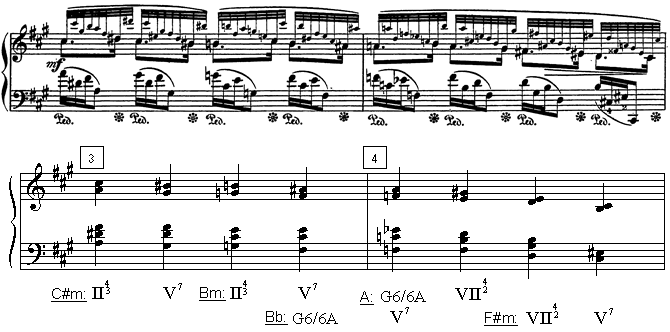Harmonic Analysis of Chopin's Prelude #8
José Rodríguez Alvira
Measures 3 and 4
The next two measures are more interesting. The progression II - V from the previous measure is developed and used in measure 3 in the keys of C# minor and B minor. Note the chromaticism of these measures:

Recording courtesy of Robert Ståhlbrand and Piano Society
The dominant seventh chord in the 4th beat of measure 3 descends chromatically to another seventh chord (F#7 - F7). We can analyze the F#7 chord as a German augmented sixth chord (Gb - Bb - Db - E) of Bb. Note that the augmented sixth / minor seventh of the chord (E) moves downward instead of upward as a normal augmented sixth. The purpose is to have the seventh in the dominant seventh chord. In the next example you can see: a) how a dominant seventh chord is transformed into a German sixth; b) how this chord would normally resolve and; c) how Chopin uses this chord:

There are other examples with similar voice movements in romantic literature. But what makes this example remarkable is that Chopin seems to have discovered the beauty of parallel movement of chords. As we will see, he will develop this procedure in other parts of the prelude.
In the 4th measure the diminished seventh chord of A minor is transformed into a diminished seventh chord of F# to return to the key of F# minor. Note that both chords are enharmonically the same chords ( G# - B - D - F = E# - G# - B - D).
The inner voice is also highly chromatic:
